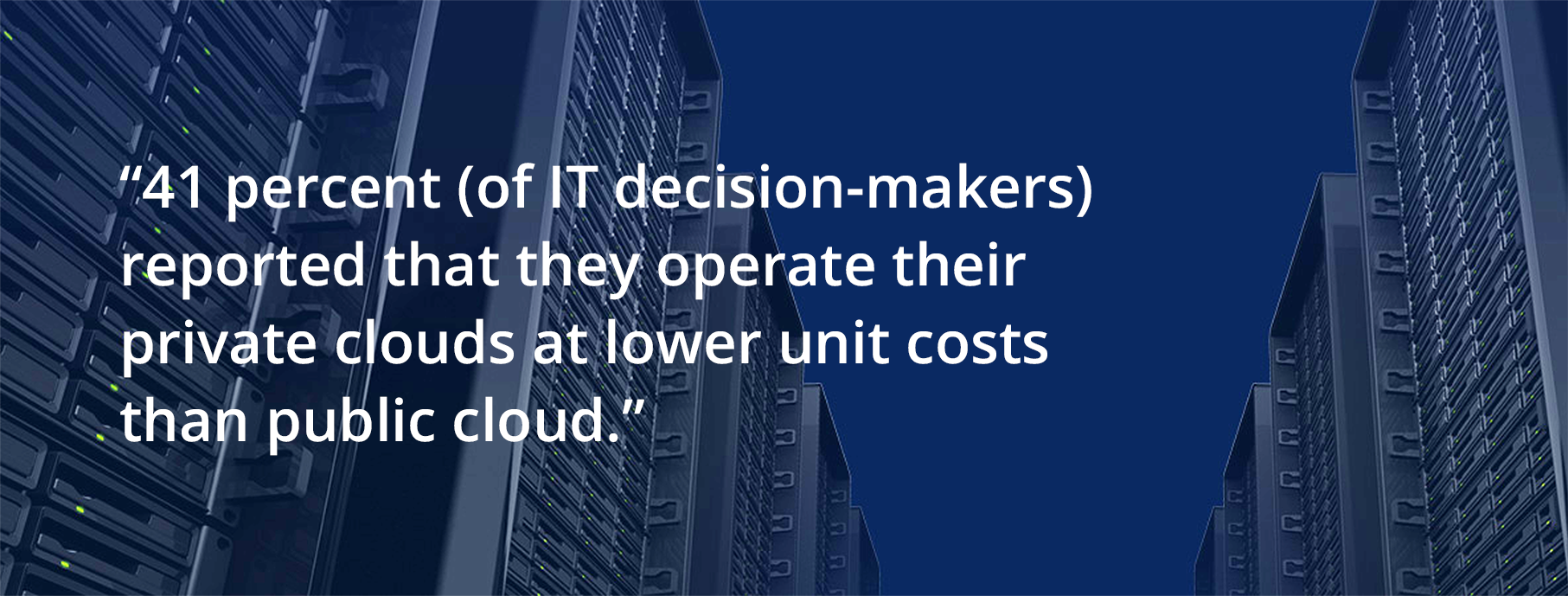If you Google “Public vs. Private Cloud Debate,” you’ll most likely find articles dating back years boldly claiming that the debate is over (like this). However, if that’s really the case, then why do so many companies still wrangle with the right setup for their needs in 2018?
The answer could lie in the fact that while there’s widespread consensus among industry experts and journalists that both are still relevant today, there is a lack of resources available that help guide businesses through the decision-making process.
This makes the debate for business leaders very much alive and well.
Public cloud is popular, and with good reason. It’s lauded for ease of access, especially remotely, and its ability to add or drop capacity as needed.
Popular isn’t necessarily best — or rather, best for everything. Where public cloud excels at computing and with customer-facing applications, there are lots of ways the private cloud is superior, and the truth is neither one is replacing the other anytime soon.
So, if both are here to stay, how does one negotiate a balance between the two?
Private cloud’s demise has also been exaggerated
There are undeniable benefits to an on-premise infrastructure.
Privacy, for example. Even with the cutting-edge security measures public cloud servers employ, enterprises still have some queasiness about storing the most sensitive data on servers stored offsite. These include documents like business plans, human resources records, accounting information, customer data, and the like.
In a heavily regulated industry, like healthcare, the matter of privacy is compounded by the legal liability involved in data protection. With personal data protection laws changing all the time, like Europe’s GDPR, even less regulated industries have to be mindful about what personal information is stored where.
Back stateside, there’s another good reason to keep important cloud operations local: internet performance. That is, bandwidth is a limited resource especially in the U.S., which ranks 10th in overall internet speeds and an abysmal 26th in mobile internet speeds. It simply doesn’t make sense to use the public cloud for basic operations, like sending a very large file to a colleague the next cubicle over.
Despite the myth that public cloud is always cheaper, research has shown that companies have been able to drive down the costs of private cloud, achieving TCOs comparable to public cloud. A study conducted by 451 Research interviewed 150 IT-decision-makers where 41 percent reported that they operate their private clouds at lower unit costs than public cloud, citing capacity planning, automation, and costing technologies as the main drivers of cost efficiency. Within that same study, respondents said that even if public cloud providers cut their prices by half (which is highly improbable), they would migrate only 50 percent of their private cloud workloads to a public cloud. It’s clear that businesses see private cloud’s value beyond just cost-efficiency.
Even the public cloud’s most overt benefit — on-the-go access to data and more — is being challenged by services that help the private cloud act more like the public cloud. For example, Synology has products that make it easy to enable remote access, file sharing, and cross-site or cross-device syncing to mimic the best features of the public cloud within a private cloud environment.

Leveraging the best of both
Considering we live in a world with both, however, why choose between public and private clouds when there are better tools than ever to operate a hybrid of the two?
For example, since public cloud infrastructure excels for customer-facing websites and applications, you can run a production site on the public cloud with a backup on a private cloud. That way you can make changes and test them in a closed environment before deploying them back into a live environment. Not to mention, by running a test machine in your own environment, you won’t need to rent additional (expensive) cloud storage and computing from a service provider.
You also might consider setting up an offsite backup yourself with an additional Synology NAS in a remote location, which is more cost-efficient than the public cloud, assuming you have the resources to do so (e.g., you have access to a secondary site and IT staff for setup). For smaller businesses without these resources, the public cloud is likely the route you’ll want to take.

The public cloud can also play a role as part of a data backup protocol, in conjunction with an onsite solution that offers an added security barrier. For example, you can encrypt sensitive data onsite before pushing everything to the public cloud, adding an additional layer of protection against malicious parties. This way you can free up space onsite while keeping important data safe and accessible as needed. With Synology, you have the option of backing up your data to the C2 Backup cloud service or one of the many major cloud providers that are integrated with Synology. The software also acts intelligently to allow you, for example, to specify which files are backed up to the public cloud to ensure your most sensitive data (e.g., tax information or customer data) is protected and not accidentally migrated.
In Summary
In the end, the private vs. public cloud debate is unimportant. We can agree that private and public cloud each have their own set of benefits. As this article explained, there are many scenarios where combining the two will provide you with the optimal solution.
What matters is finding a solution that meets your individual needs. There is no one-size-fits-all approach when it comes to data protection. Fortunately, there are companies like Synology that are working hard to blur the lines between public and private cloud, so that your business can confidently employ a system that addresses all of your needs.
Thoughts, questions or comments? Reach out to us on social: [Twitter / Facebook] or visit our contact page.
